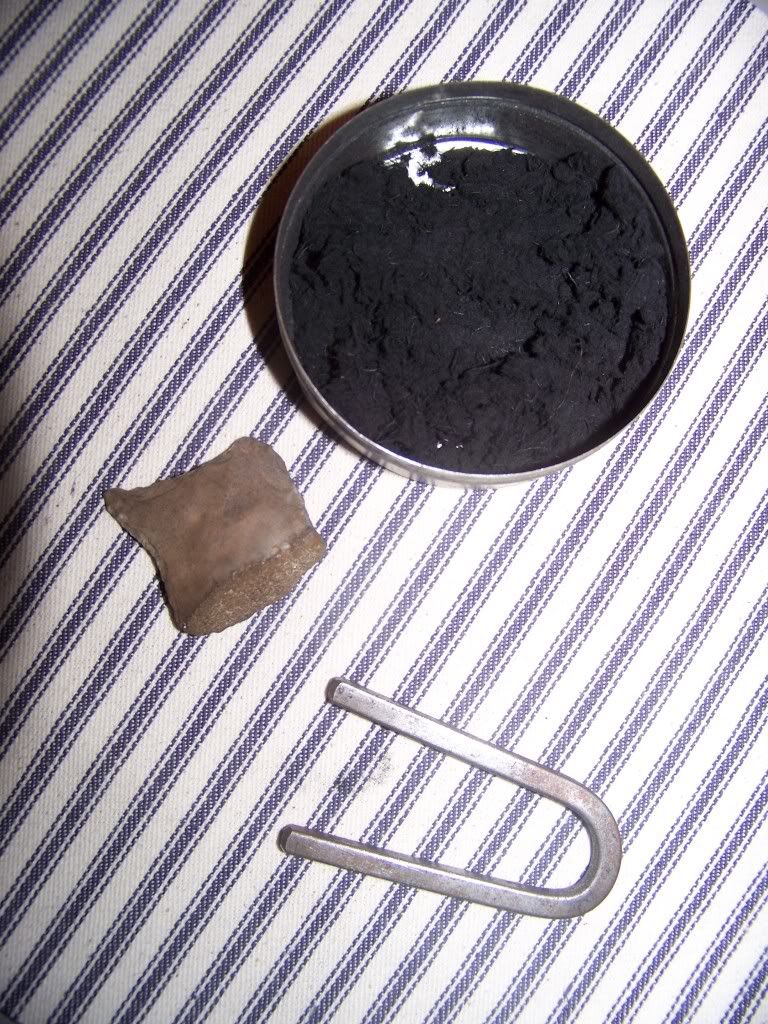I'll tell you but you can't say a word :wink: ...it's an old family secret that my grandfather taught me :nono:
Most people heat to a dull cherry red and then quench in water for high carbon steel, some then temper a bit, most don't for a striker...
I expect that I might get some flack on this, cuz the way I was taught is a bit different than the way most do it, but for what it's worth to you, here ya go...
After I get the steel to the shape I like, I heat it up to a bright cherry red ("past the Curie Point" as Grandpa B would say)...originally he then made me hold a magnet next to the steel as it started to cool, as soon as the magnet felt a little pull everything was dropped into the quench bucket....after a bit I could recognize the right color as it cooled and did away with the magnet (it was too hot anyway as I was taught to smith without gloves)
The quench I use is old pickle brine...not water or oil, never asked but I suspect we used it cuz we had it, being that we never threw anything out that we could use for sumthin else...
As an engineer I understand the physics behind what he learned through doing...Over simplified, Steel is basically a cube molecule made up of iron and carbon, In steel the carbon is found in the center of the molecule at a low state of energy (cold)...As the steel is heated, more energy is given to the carbon which at some point alters its position to become centered on the face of the cube. If the steel is rapidly cooled at this point the carbon doesn't have a chance to get back to its place of rest and low energy...the faster you quench the steel the more carbon stays on the face....Heavy brine is considered to be the fastest quench media, so my method has technical merit as well as traditional value from the way I was taught...
Caution here....making a striker you are looking for a very hard surface, this is not the way I harden other things. If what you are making has an important function you need to understand the type of steel you are working with or risk failure...if you quench water hardening steel in oil it will be too soft and if you quench oil hardening steel in water it will be too brittle...either one can have bad results...the exception to this rule is if you are making a large item like a hammer head or heavy tool, the large thermal mass will cushion the shock of quenching so the medium used is less critical...









